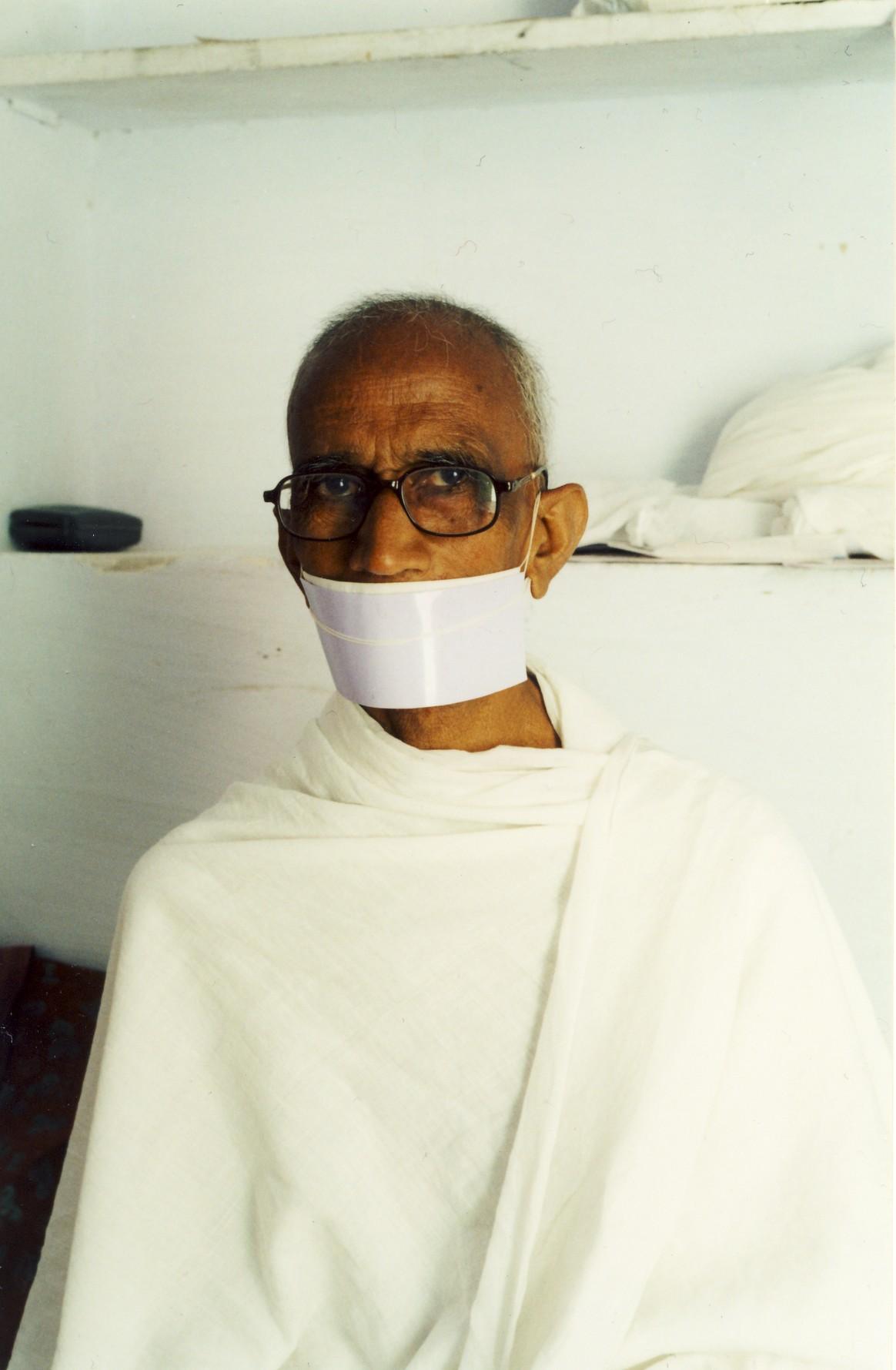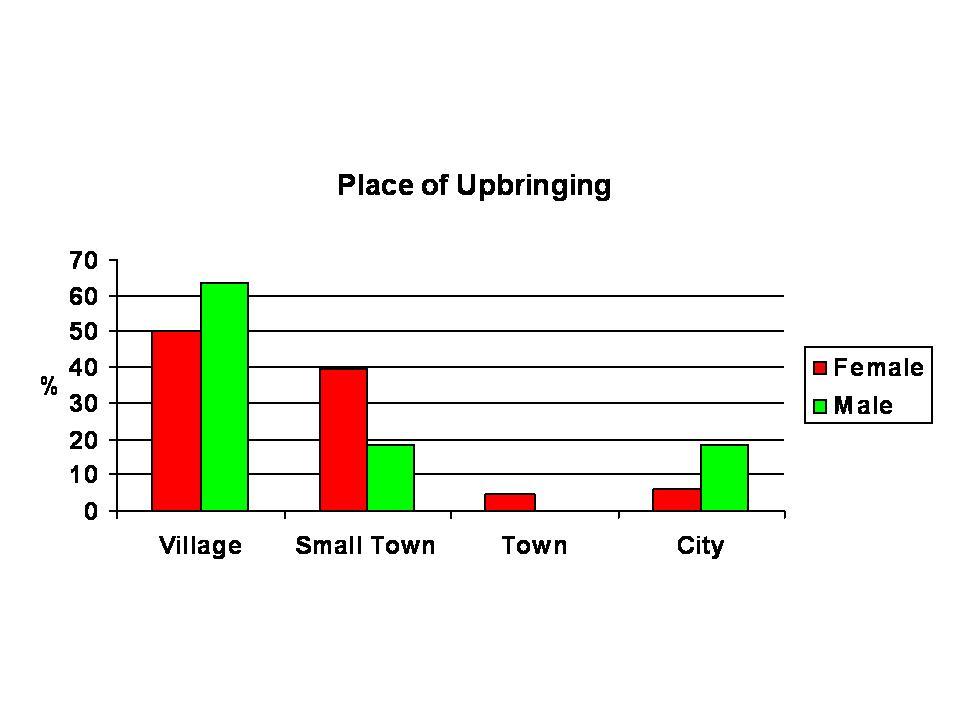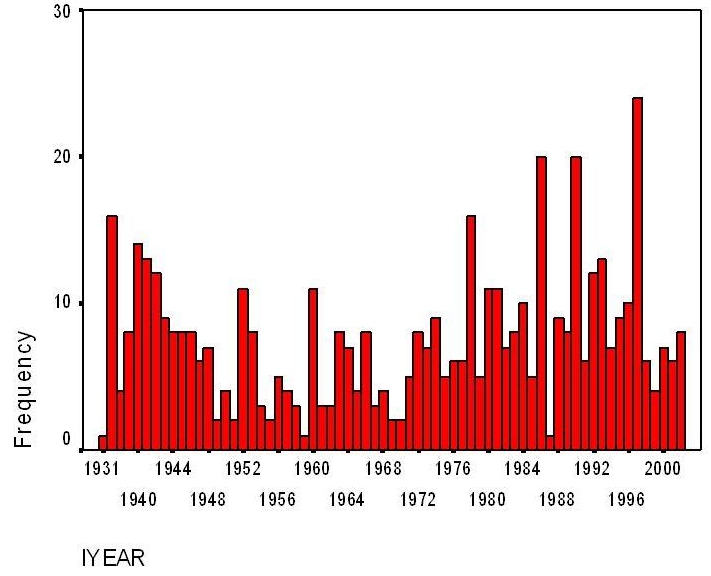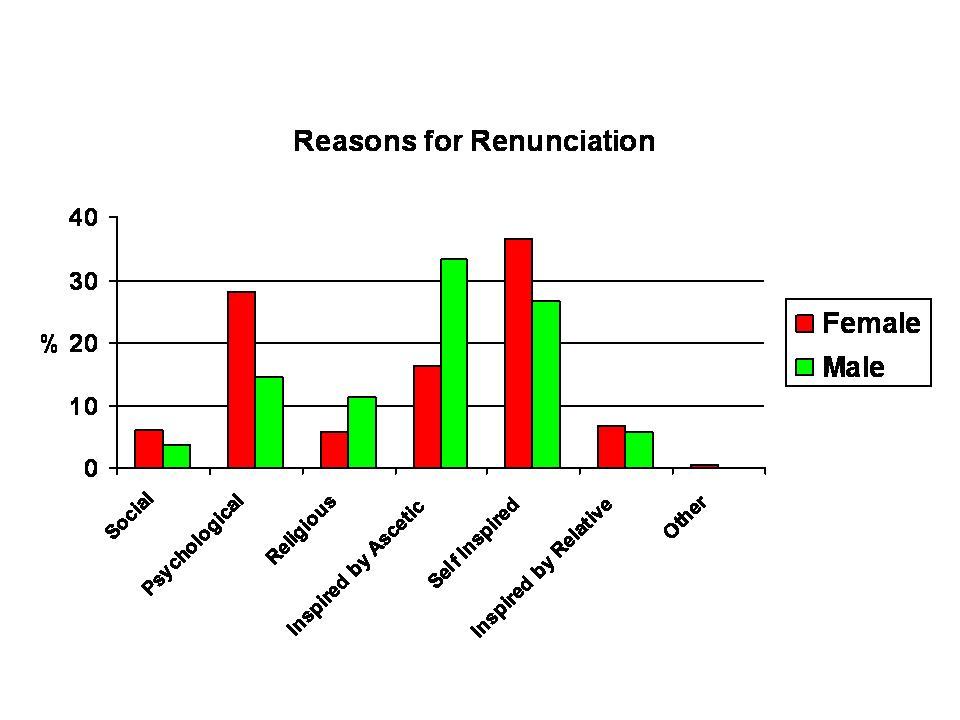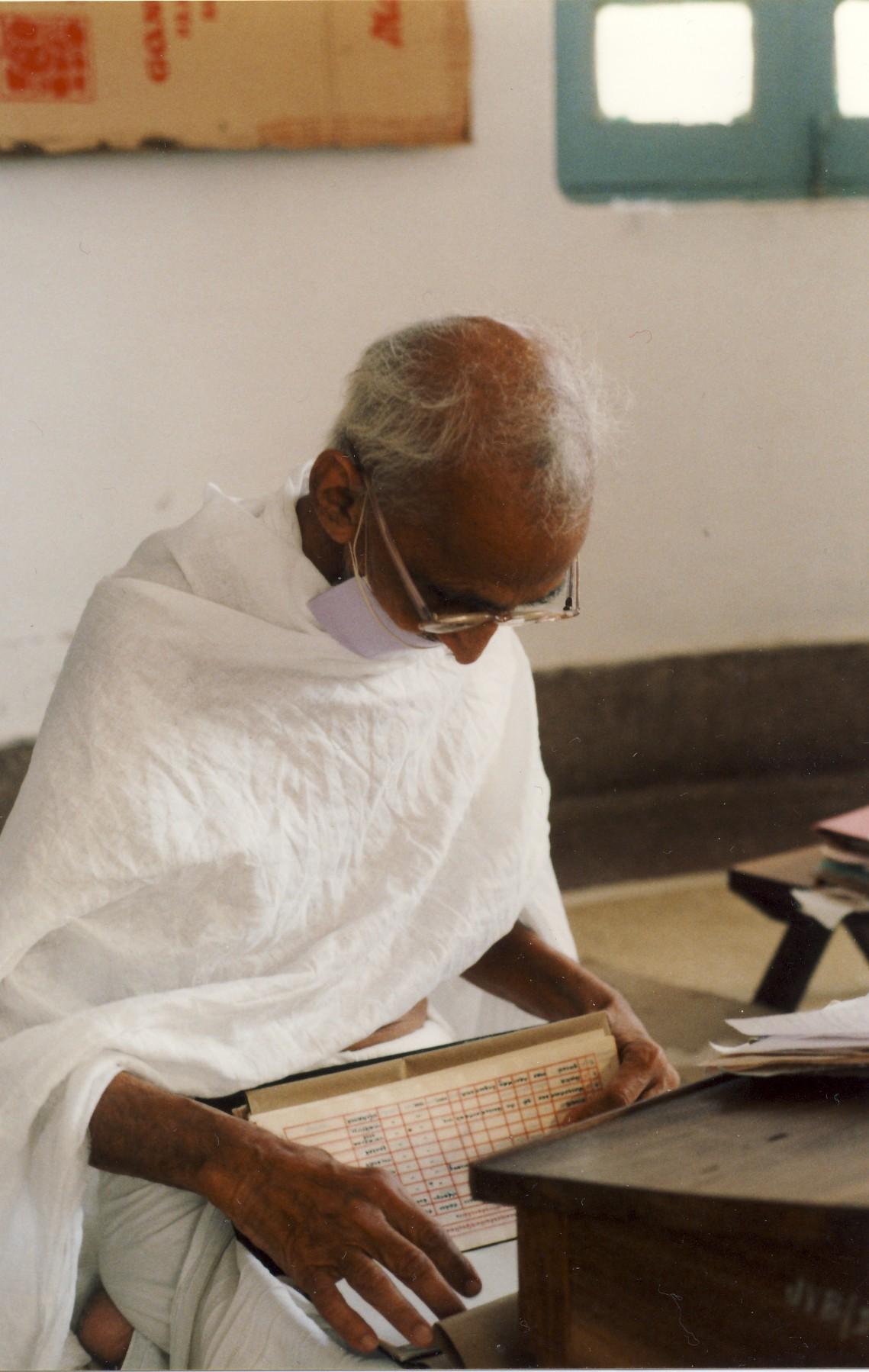32
Jain Monastic Life
A Quantitative Study of the Terāpanth Śvetāmbara Mendicant Order[1]
One of the most neglected areas of research in Asian religions is the sociology of monastic orders. This is surprising, given the pivotal importance of organised asceticism for contemporary Jain, Buddhist and Hindu traditions. Jain mendicant orders are the oldest surviving monastic traditions of the world. Today, they broadly refer to themselves as śramaṇa saṅghas, or ascetic communities. While information on the history and organisation of these itinerant groups is increasingly accessible, few studies inform us on their social and geographical dynamics. To remedy this situation regarding one centrally organised and tightly regulated Jain mendicant order in India, a combined socio-demographic and network-analytical survey was conducted by the present writer in 2001-2003 in Rajasthan, with the blessings of the late Ācārya Mahāprajña (1921-2010), head of the Śvetāmbara Terapānth mendicant order. The aim was to supplement previously collected qualitative data on the history, rules and regulations, monastic division of labour and religious life of the Terāpanth, and on general demographic trends in contemporary Jaina monasticism.
The principal unit of investigation was the monastic order itself, which was treated as social system differentiating itself from the social environment through rules of membership, role-definitions, and emergent actions. The analysis of living social systems is predicated on third order observation, or observation of self-observation. While the Terāpanth order describes its own functioning in normative terms, resembling the model of rule-implementation of classical organisational sociology with a focus on values, norms, rules, commitment, hierarchy, lines of command, compliance, etc., the project aimed at an understanding of the social dynamics within a Jain monastic community which presents itself as a limiting case of perfect social self-regulation. Not the formal structure and the practice of rule-implication, but the conditions, functions and consequences of the process self-organisation were the main concern of the project.
The principal aim of this pilot study was to generate a clearer idea of the network structure of actual contacts within the mendicant order, ideally in form of a sociomatrix recording the internal transactions of all mendicants in selected media (name-recognition, communications, services, material transactions) within a defined time-frame, to collect data for the study the spatial dynamics, to measure group connectedness, to statistically correlate the results with the newly generated demographic data, and to analyse outcomes in the light of the rules and regulations of the order and ethnographic background information collected over more than fifteen years. The project specified three main objectives:
- To produce reliable statistical information on the demographic and social composition of the entire contemporary Terāpanth mendicant order, including psychological factors such as motivations for renunciation.
- To produce a systematic analysis of the network structure within the order and the patterns of transactions in key media such as information and material support.
- To learn more about the network analytic aspects of studying a trans-regionally organised group of itinerant mendicants.
The research was conducted in form of a survey in 2003 amongst 785 Terāpanth monks (19.6%), nuns (68.5%) and male (0.5%) and female novices (11.3%) using a two-part questionnaire in Hindi.
Muni Sukhlal in Pañcāvat
Data Collection
The first round of data collection took place between 1.8.2001–1.8.2002. After pre-tests, the distribution of the questionnaire amongst an exceptionally large group of some 450 monks and nuns attending the annual assembly, maryādā mahotsava, of the Terāpanth mendicant order held in January 2002 in the town Pacapadarā in Rājasthān proved to be a great success. With the help of a leading monk, Muni Sukhlāl (born 1930), and the junior monks under his guidance, research assistant Harshita Jain of Bikaner managed to get most of the locally distributed questionnaires returned in February 2002.
Because the response to the network analytical questions was insufficient for statistical investigation, additional questionnaires were distributed by mail with the help of Muni Sukhlāl and his associates. More than 100 questionnaires were returned in this way. Due to the geographical distances no interviewer could be used.
By August 2002, 477 mendicants completed the questionnaire, at least in part. The response rate of monks and samaṇ/īs, who are all well educated, was notably higher than of the nuns. Some mendicants were too old or sick to be involved in the project. Many older nuns did not answer the questionnaire because they could not read and write, though some asked younger nuns to help them.[2] A number of mendicants never received or did not return their questionnaire, and about 10-20% refused to answer or did not fill in the questionnaire properly for a variety of reasons, partly due to the mechanical and apparently meaningless nature of the exercise and the perceived “shallowness” of network-analytical questions geared towards quantitative analysis. The quality of the answers varied significantly from question to question.
Because of the, not entirely unexpected, difficulties encountered with the response rate and the quality of the data for network analysis, it was decided to initiate a second round of data collection with the help of interviewers during the period of residency of the mendicants during their annual rain retreat, or cāturmāsa, in July-November 2002, and to extend the project by six months until March 2003. During this period, the response rate was increased to 530 or 67.6%: 108 monks (14%), 362 nuns (46%), 4 male novices (0.5%), and 56 female novices (7%). For an additional 40 (5%) mendicants (13 monks, 12 nuns, 15 female novices) basic demographic information was extracted from mendicant biographies and group statistics published by Muni Navaratnamal (1981-2002). In this way, detailed demographic data were collected for 570 or 72.6% of all mendicants in the Terāpanth Jain order between August 2001 and March 2003. However, for some items of Part I of the questionnaire the response rate was too low to form a representative sample, and in order to enable meaningful cross-tabulations, 74 of the 570 questionnaires had to be excluded from analysis.
The final sample of 496,99 sādhus (20%), 341 sādhvīs (68.8%), 4 samaṇs (0.8%) and 52 samaṇīs (10.5%), is statistically representative of the population and forms one of the largest collections of demographic data on a South Asian mendicant order to date.
Social Background of the Mendicants
State of Origin:
The majority (78%) of the sample of Terāpanth mendicants came from a small number of districts in Rajasthan, in particular Churu (30%), Bikaner (20%) and Nagaur (10%), and from migrant families from these regions to Kalkatta (3.2%) and other commercial centres (where the majority of Terāpanth laity now live).
Birth Place:
Most mendicants were born and brought up in villages (52%) and small towns (36%), and only a minority in towns (4%) and cities (8%). The main recruitment areas were the small towns Sardarshahar (10%), Gangashahar (9%), Dungargarh (7%), Ladnun (9%) and the surrounding villages and adjacent small towns such as Sujangarh, as well as the area around Badmer and Kalkatta. The highest proportion of male renouncers came from villages. There is no significant evidence of (an impact of) family migration from villages to towns and cities or vice versa.
Caste:
The majority of the mendicants belonged to the Osvāl castes (85%) with a significant minority of Agravāls (12%) from the region of Hisar and Hansi in Hariyana (and Delhi and Orissa). Most respondents returned themselves as Bīsa Osvāl or emphasized that the status distinction between Bīsa- and Dasa Osvāl is not observed anymore.
Father's Occupation:
Generally, the data on father's occupation (in the majority of cases equivalent with family occupation) show that nearly all mendicants (87%) came from traditional self-employed lower middle class business families with a modest but relatively secure source of income. This seems to reflect the overall pattern amongst the Rajasthani Osvāl castes. More than half of the business families from which Terāpanth mendicants emerged engaged in the traditional cloth (33%), jute (4%) and jewellery (5%) trades as well as in shop keeping (13%). Only 7% engaged in manufacturing, and 1% in finance. The rest were higher professionals and employees in government service and management etc. (11%), and a small number of (part time) farmers (0.8%).
The fact that wealthy metropolitan Terāpanth Osvāls families produced only few mendicants was explained by Terāpanth nuns with reference to the “greater freedom” and “more entertainment” and “opportunities for self-development” rich women enjoy. Women of “poor” middle class families in rural areas live in joint families. They have less time for themselves and are totally dependent on their husbands and their families. They have no independent income, cannot leave the house often, and, because the villages offer not much, enjoy few public entertainments. But they have more contact with mendicants than metropolitan families. The only entertainment and intellectual stimulation is often provided by religious contexts. Similar reasons have already been reported by Goonasekera (1986) for Terāpanth monks.
Family Name:
The mendicants were recruited from a small number of gotras, or exogamous family clans. Of altogether 114 family names mentioned by respondents, 17 names accounted for 33% of all mendicants.
Family Size:
Nuclear families (within the joint family) had a median size of 6 members (range of 1-14). This family size is not untypical for middle class Rajasthani households, though firm data are a desideratum. It decreased slightly over the last 70 years. Most of the key families had more than one mendicant in the order (one nun could name 13 relatives inside the order).
Birth Order:
Previous studies on Buddhist (Spiro 1970) and Terāpanth Jain mendicants (Goonasekera 1986: 122) argued that the motivation for renunciation can be explained in terms of the emotional deprivation of middle children, i.e. Freud's theory that “middle children experience fluctuations of nurturing and affection from early childhood … especially girls”. In contrast to Goonasekera's finding of a higher than statistically expected proportion of middle children amongst his sample of 75 Terāpanth “renouncers” (82%) - 65 females (86.6%) and 10 males (13.3%) - the present sample of 137 respondents - 56 sādhus (40.9%), 40 sādhvīs (29.9%), 41 samaṇīs (29.2%) - revealed only the expected percentage of 61% middle children (given an average family size of 6), as well as 26% youngest (Goonasekera: 10%), 11% eldest, and 2% only children. The overrepresentation of middle children in the earlier study may thus be a sampling effect. But both samples are not statistically representative. It is significant, though, that 10% more female than male middle children renounced. The high number of youngest male children reflects the economic and social importance of the eldest male child as the principal heir of the family business.
Initiation Age:
The data confirm the overall increase of the mean initiation age over time observed by Goonasekera, and substantiate trends, such as the impact of the aforementioned institutional factors on initiation patterns. The mean initiation age for the entire sample was 20 years. Generally, males (mean age: 18) were initiated earlier than females, nuns (20) earlier than female novices (samaṇīs) (24).However, during the period between 1931 and 1948 the mean initiation age of 15 years was identical for male and female mendicants. Gender differences developed with the creation of the first pre-monastic educational institution for girls in the town of Ladnun in 1949, and in particular after the reforms of Ācārya Tulsī (1914-1997) in the 1980s which only permit male but not anymore female child-initiation (bāla-dīkṣā). Both the overall gender differential and the higher initiation age of female novices compared to nuns thus appear to be effects of institutional factors, especially the compulsory pre-monastic education for girls which also accounts for the increasing number of unmarried girls rather than widows in the monastic order (90% of the mendicants in the sample are unmarried). Social support for widows is nowadays provided by religious and social funds.
Initiation Year:
In 2001-2 the mean age of the Terāpanth mendicants was 52 (for monks it was slightly lower: mean 50, median 47) with peaks around 75 and 40, i.e. those born 1926 and 1961. This reflects the lower recruitment rate during the 1950s and 1960s compared to the 1940s and the 1980-1990s. The number of initiations increased after the inaugurations of the last two ācāryas in 1937 and 1997, and during the decisive years of the Indian freedom struggle between 1940 and 1945, followed by a post-Independence low, and a peak after the establishment of two new institutions - the Jain Vishva Bharati centre in Ladnun in 1978 and the new Terāpanth novice order in 1980. Less than 50% of all initiations took place in the home-village/town of the mendicants.
Inition Year
Reasons for Renunciation
The two open questions concerning the causes informing the decision to renounce the world and the sources of inspiration identified push and pull factors. For statistical analysis, the spectrum of answers was coded into seven categories, after discussing the answers with Terāpanth samaṇīs: [3]
Statistical analysis demonstrated that religious experiences or doctrinal reasons were not the prime motivating factors. The fact that nevertheless relatively more men than women mentioned religious reasons may be explained by the perceived need of men to legitimize their interest in religion, since traditional role models cast them as 'less religious' than women.
A more detailed analysis of the responses revealed interesting gender differences. For males, especially young males, the personal influence of ascetics (sometimes but not necessarily relatives) was important, while for females (socio-) psychological factors were more significant. Personal interviews indicated that the most frequent answer of female mendicants in response to the question who inspired them to become initiated: 'self inspired' (svataḥ preraṇā) also served as a rationalization for a number of unspecified personal, spiritual, social and psychological reasons.[4]
Initiation as an alternative to marriage for women was not often explicitly mentioned (10 nuns and no monks), although in the ethnographic literature on Jain mendicants it is highlighted as the most important factor. However, this motive may also hide behind the answer 'self inspired' and co-varies with certain 'psychological reasons'. Interviews with Terāpanth nuns confirmed that relative poverty and family pressure only indirectly influence female renunciation “because the conflicts produce intense bitterness in the mind of the renouncer” (Goonasekera 1986: 224).
Widowhood (Boradiyā 1975, Goonasekera 1986) could not be established as a dominant factor for renunciation anymore (15 widows, 2 widowers), since most initiation candidates are nowadays young and unmarried (Reynell 1985: 269). Within the Terāpanth this is not only a consequence of fewer numbers of child-widows and improvements in the social world of women (Cort 1991: 659f.), but also because of new rules regarding pre-monastic education of female candidates (Flügel 2006: 364f.).
For young women the ‘experience of death’ was an important explicit motive, but less so for young men, who more often mentioned 'religious disposition/inclination' (dhārmik pravṛtti/ruci) or the ‘extreme attraction’ (atyadhik ākarṣaṇa) of religious life as motives (despite the high number of fatherless male renouncers), which was rarely referred to by women. An explanation for this may be sought in the role patterns in Rajasthani middle class and caste families, i.e. the strong family orientation that is imprinted more on women than on men, who are frequently on business travels away from home. Men have to legitimate their special interest in religion, which is taken for granted in the case of women, who described themselves as “more sensitive”.
The analysis of the survey data showed that, in contrast to Buddhist societies (Spiro 1970), economic or status considerations were not directly important; nor are women forced to renounce by their families as is often suspected (see already Goonasekera 1986).
With regard to the factors 'own choice' and 'social' and 'psychological' reasons not much seems to have changed over the last 2000 years. Self-attributions of motives and intentions are, of course, constructions which are, more or less, informed by role expectations. Many of the returned reasons, especially extrinsic or psychological reasons, have already been enumerated in sections of the Jain canon “which, partly, give the impression of holding up a mirror to the monks” (Schubring 1935/2000 § 137). The ten principal reasons are listed in the Couplets on Renunciation (Pavvajjā-padaṃ) of Ṭhāṇa 10.15 [712a]: (1) one's own choice, (2) anger, (3) poverty, (4) dreams, (5) fulfilment of an earlier vow, (6) recollection of inspiration received in a former birth, (7) illness, (8) insult, (9) enlightenment by the gods, (10) affection for a son who is a muni. Ṭhāṇa 4.571-577 [276ab] lists additional this-worldly and other-worldly motives and methods for inducing the inclination for renunciation in another person. To put these empirical motives in perspective, Ṭhāṇa 4.577 distinguishes four types of renunciation on a scale beginning with renunciation free of fault and three progressively more faulty types. The leaders of Jain mendicant orders are compared with farmers who are interested in keeping only unsullied grain.
Division of Labour
The favourite activity of initiated monks (38%) and nuns (32%) is to study (svādhyāya), followed by service (sevā) to the order (16%) for monks, and needlework (silāī) (9%) and art work (kalā) (7%) for women, i.e. producing objects of daily use (begging bowls, etc.), drawing, and other crafts. This reflects the traditional sexual division of labour within the order which is perpetuated through a system of rewards (kalyāṇaka bonus points) (Flügel 2003b), though the quantity of items produced and transacted is low.
Statistically, needlework, study/research, and service to sick and old nuns and monks (it is obligatory for young monks and nuns to serve one year in one of the sevā kendras for old nuns and monks), but also artistic work, are more often than other 'good deeds' rewarded with bonus points by the present head of the order. Officially, kalyāṇaka bonus points should not be used as a medium of exchange within the order. However, for females the correlation of the length of time spent in the mendicant order with the number of bonus points collected for good work is statistically significant. Nuns accrued far more bonus points then monks. High scoring men and women tended to study and to write. By contrast, there is no statistically significant correlation with regard to males. This result furnishes indirect proof for the observed pattern that males used their bonus points as a medium of exchange and spent their kalyāṇakas on help offered by the nuns for mending clothes, etc., while nuns rarely received reciprocal services from monks. The rules of the order explicitly rule out the practice of equivalent exchange in favour of the ideal of service to the order.
Monastic Networks
The key questions for network analysis concerned the extent to which the order was socially integrated, which informal networks or groups (‘cliques’) existed, and how the monastic rules and regulations shaped the network structure.[5] The analysis of selected features of the monastic networks demonstrated: (a) that many mendicants do not know one another; (b) that older mendicants are better connected than younger mendicants; (c) that mendicants of the same category, gender, age group and kinship group are more connected than others; (d) that the members of the entourage of the head of the order, or gurukula, are more connected than others; and (e) that both novices (samaṇ/ī) and ex-novices who were promoted to the status of fully initiated mendicants are extremely well connected. There are three reasons for this: the samaṇ/īs lived and studied together for several years in religious boarding schools, they are allowed to travel and meet other monks and nuns, and they meet each other every year at the annual assembly of the mendicants. Thus, over time, the entire network structure of the order will be affected by the introduction of the novice category in 1980. Increased connectivity between the nuns is to be expected.
The data also showed that: (a) (with the exception of the members of the gurukula) fully initiated male and female ascetics hardly ever interact across the gender divide, since contact between male and female ascetics is strictly regulated and because there are few opportunities for itinerant mendicants to meet; (b) the networks are oriented towards the office holders of the centralised monastic hierarchy, who qua position know and interact with everyone; (c) family members of the same gender often live together in the same itinerant group, because in this way conflict within small groups is minimized; (d) family connections are maintained within the order through occasional “exchanges” of small gifts which have to be mediated by the group-leader and the head of the order; (e) group solidarity as a whole is strengthened through birth-day and initiation-day cards from the leadership of the order; (e) rotation of personnel does not often take place, except: in cases of conflict, to balance the educational and age profile of a group, and for specific collaborative projects; (f) due to the greater group size the rate of rotation is higher amongst nuns than amongst monks; (g) novices show a higher degree of mutual interaction than other mendicants for the said reasons.
Summary
On the basis of a sample of 496 mendicants of the Terāpanth Śvetāmbara Jain order in the years 2001-3, a number of ethnographic observations and theories on Jain ascetics could be tested, albeit only for few questions in a statistically representative way due to uneven response patterns. A socio-demographic analysis showed that the Terāpanth mendicants are largely recruited from lower middle class Osvāl business families in the villages and small towns of the Churu, Bikaner and Nagaur districts of Rajasthan. The pivotal families are long-term followers of the Terāpanth and often have more than one initiated family member in the order. Nowadays, the majority of the mendicants are unmarried females who renounce of their own accord, primarily because their conservative families do not offer them any other alternative to marriage, and because of their familiarity with Jain values and pre-established links with the well organised Terāpanth order which offers unique educational opportunities for women in a traditional social context. With regard to the rural background, the findings resonate with Spiro's (1970) observations on Therāvada Buddhist monks in Burma. However, the families of Terāpanth Jain renouncers are more urbanized and of higher social and economic standing than those of the Buddhist monks in Burma. There are no significant material reasons for renunciation, and no one is forced to enter mendicancy. Goonasekera (1986) offered a psychoanalytical interpretation of Terāpanth Jain patterns of renunciation, but overlooked the psychological significance of experiences of death and suffering for female renouncers in particular. By contrast, one of the main findings of this study is that social and organisational factors, such as the pre-monastic educational institutions of the Terāpanth founded in 1949 and 1980, have a strong influence on initiation patterns, gender relations, geographical spheres of influence, the division of labour and the social integration of the order.
Muni Navaratnamal in Lāḍnūṃ 2000
References
Balbir, Nalini. “Recent Developments in a Jaina Tīrtha: Hastinapur (U.P.) - A Preliminary Report.” The History of the Sacred Places in India as Reflected in Traditional Literature. Panels of the 7th World Sanskrit Conference Vol. II. Ed. H. Bakker. General Editor: Johannes Bronkhorst, 177-191. Leiden: E. J. Brill, 1990.
Boradiyā, Hīrābāī. Jaina Dharma kī Sādhvioṃ evaṃ Viduṣī Mahilāoṃ kā Itihās. Ph.D. thesis, University of Indore, 1975.
Cort, John E. “The Śvetāmbar Mūrtipūjak Jain Mendicant.” Man (N.S.) 26 (1991) 651-671.
Flügel, Peter. “Socio-Demographic Analysis of the Terāpanth Śvetāmbara Jain Monastic Order.” Final Report: British Academy Research Grant SG-32893. London, 25.5.2003a.
Flügel, Peter. “Spiritual Accounting: The Role of the kalyāṇaka patra in the Religious Economy of the Terāpanth Śvetāmbara Ascetics.” Jainism and Early Buddhism. Essays in Honor of Padmanabh S. Jaini. Ed. O. Qvarnström, 183-224. Fremont: Asian Humanities Press, 2003b. https://eprints.soas. ac.uk/965/
Flügel, Peter. “Demographic Trends in Jaina Monasticism.” Studies in Jaina History and Culture: Disputes and Dialogues. Ed. P. Flügel, 312-398. London: Routledge, 2006. https://eprints.soas. ac.uk/6242/
Flügel, Peter. “Jain Monastic Life: A Socio- Demographic and Network Analysis of the Terāpanth Śvetāmbara Mendicant Order.” International Journal of Jaina Studies (Online) 4 (2009) (forthcoming)
Fohr, Sherry E. Gender and Chastity: Female Jain Renouncers. Ph.D. thesis, University of Virginia, 2001.
Goonasekera, R. S. A. Renunciation and Monasticism among the Jainas of India. Ph.D. Dissertation, San Diego, University of California, 1986.
Mitchell, Clyde. “The Concept and Use of Social Networks.” Social Networks in Urban Situations: Analyses of Personal Relationships in Central African Towns. Ed. J. C. Mitchell, 1–50. Manchester: Manchester University Press, 1969.
Navaratnamal, Muni (comp.). Śāsana Samudra. Vol. 1 18. Published by Uttamcand Sethia. Kalkattā: Śrī Jain Śvetāmbar Terāpanthī Mahāsabhā Prakāśan & Lāḍnūṃ: Jain Viśva Bhāratī, 1981-2002.
Reynell, Josephine. Honour, Nurture and Festivity: Aspects of Female Religiosity amongst Jain Women in Jaipur. Ph.D. thesis, University of Cambridge, 1985.
Schubring, Walther. Die Lehre der Jaina. Nach den alten Quellen dargestellt. Berlin: Walter DeGruyter, 1935 (The Doctrine of the Jainas. Described after the Old Sources. Translated by Wolfgang Beurlen. Third English Edition. With Three Indices Enlarged and Added by Willem Bollée & Jayandra Soni. Delhi: Motilal Banarsidas, 1962/2000).
Spiro, Melford E. Buddhism and Society. New York: Harper & Row, 1970.
Ṭhāṇaṃ (Sthānāṅga Sūtra). Mūla Pāṭha, Saṃskṛta Chāyā, Hindī Anuvāda tathā Ṭippaṇa. Vācanā Pramukha: Ācārya Tulsī. Saṃpādaka-Vivecaka: Muni Nathmal. Lāḍnūṃ: Jaina Viśva Bhāratī, 1976.
Vallely, Anne. Guardians of the Transcendent: An Ethnography of a Jain Ascetic Community. Toronto: University of Toronto Press, 2003.
 Dr. Peter Flügel
Dr. Peter Flügel
